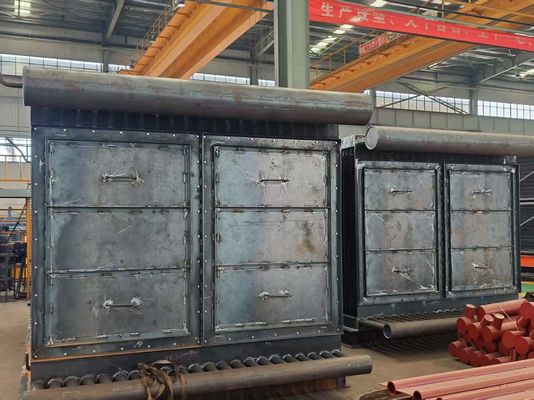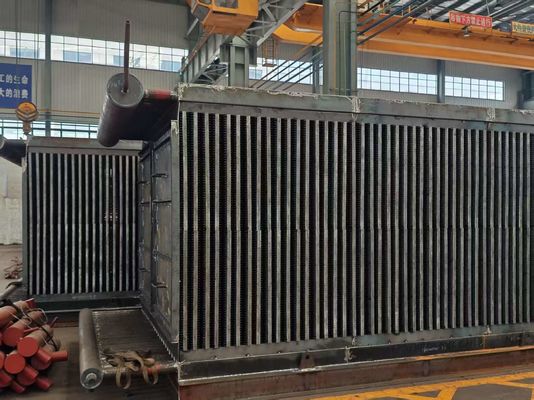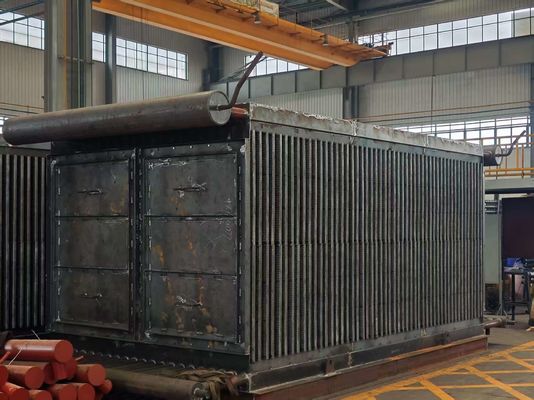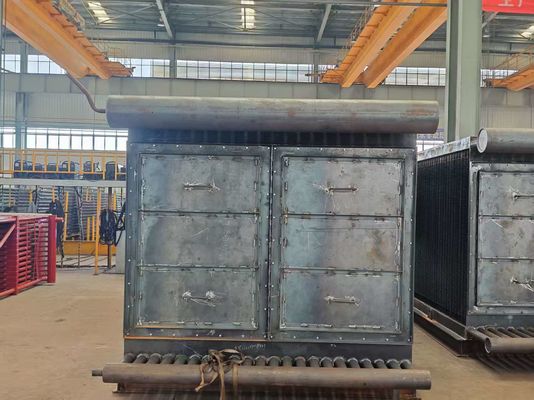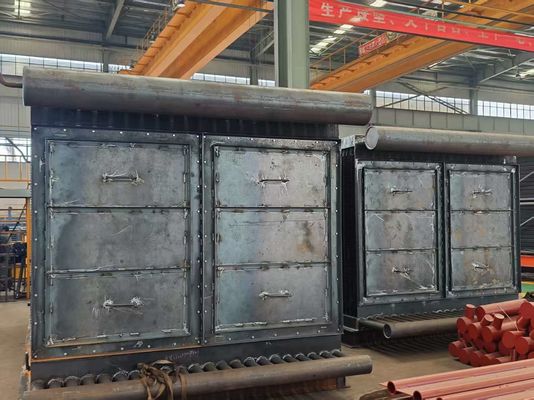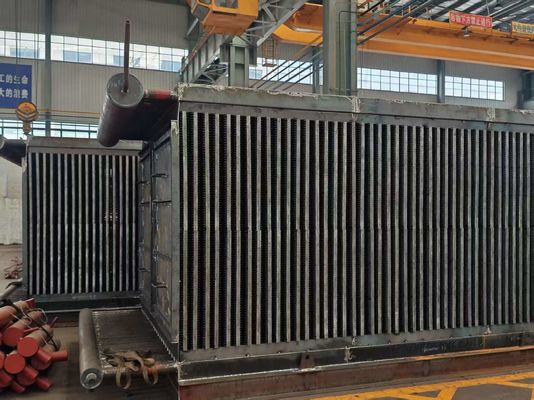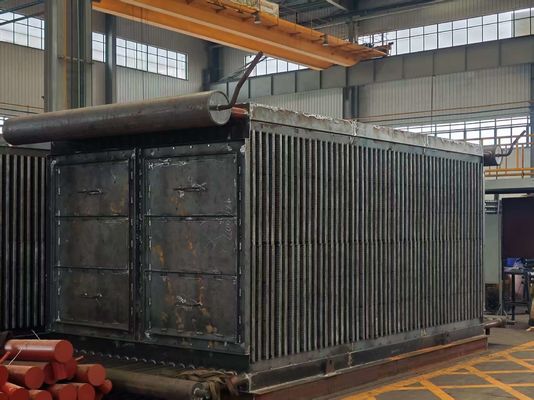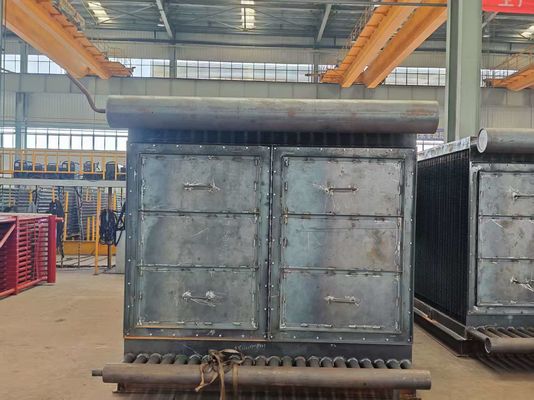-
 AlexanderCredible suppliers
AlexanderCredible suppliers -
 LouisIt's been a pleasure working with you
LouisIt's been a pleasure working with you
ASME Certified H Fin Tubes CFB Boiler Efficiency+30%
| Place of Origin | Zhangjiagang China |
|---|---|
| Brand Name | SANCO |
| Certification | ISO9001 , ASME, TUV,EN |
| Model Number | Boiler Economizer |
| Minimum Order Quantity | 1Set |
| Price | Negotiable |
| Packaging Details | Iron Frame ASME Standard Packing |
| Delivery Time | 30 |
| Payment Terms | L/C, T/T, Western Union |
| Supply Ability | 1500 Tons / Month |

Contact me for free samples and coupons.
Whatsapp:0086 18588475571
Wechat: 0086 18588475571
Skype: sales10@aixton.com
If you have any concern, we provide 24-hour online help.
x| Fuel | Coal/Gas/Oil-fired, Water Heat | Type | Primary And Secondary |
|---|---|---|---|
| Specification | ASME Inspection | Dimension Of Tube | 38.1*3.2 |
| Painting | Customized | Keywords | Boiler Economizer |
| Materials | Carbon Steel / Stainless Steel | Usage | Power Plant/CFB Boiler |
| Highlight | ASME H-Fin Tubes,Boiler H-Fin Tubes,CFB Boiler H-Fin Tubes |
||
ASME-Certified H-Fin Tubes - CFB Boiler Efficiency+30%
Product Description
Boiler economizers, finned - tube heat exchangers, heat liquids (often water). They raise the liquid’s temperature, typically without reaching its boiling point. We produce three economizer types: bare - tube, H - finned tube, and spiral - finned tube. The H - finned variant, a high - efficiency unit, uses H - finned tubes.
Versus bare - tube models, H - finned economizers boost heat - exchange area and cut tube count. They also expand flue - gas flow space, slowing gas speed and reducing abrasion.
H - finned tubes can form double - H structures, offering high rigidity for long - tube - row setups.
The spiral - finned economizer, a new heat - transfer design, employs spiral fin tubes. This addresses severe abrasion and short service life issues of conventional types.
![]()
Standard economizer designs?
Horizontal staggered finned tubes (spiral/H-type fins).
Specifications
| Description | Boiler economizer |
| Material | Alloy steel, Carbon steel, SA210C ,SA213T22, etc. |
| Material standard | ASTM, EN or ISO etc. |
| Dimension | Customization |
| Weight |
Min: 10 ton Max.:1000 ton |
| Smelting Process: | EF+LF + VD |
| Process | Material→Ingot → Hot/Cold-Rolling→ Heat treatment (Normalizing+ tempering) → Inspection →rough machining→UT →2nd Heat treatment →finishing machining →Inspection |
| UT standard | ASTM A388 or EN10228, etc |
Function
Technical specifications
Material Structure
Consists of a serious of spiral fin tubes, the headers of inlet and outlet, bend, frame and other auxiliaries.
Structure Arrangement
In line / staggered arrangement.
Variety
Package Boiler Economizer
| 1 | HDB has unique manufacturing capabilities that the Optimus engineers take full advantage of when designing sulfuric acid plant economizers and superheaters. |
| 2 | Often this allows the Optimus units to be configured for higher heat transfer efficiencies which results in a reduced surface area requirement and, consequently, a lower-priced product. |
| 3 | HDB utilizes its on-site capabilities to fin and bend the tubes, machine and fabricate the headers, drill the tubesheets, cut and prep all casing materials, and perform all of the pressure part and casing welds. |
| 4 | This gives HDB more control of the manufacturing sequence and schedule which has helped us achieve a remarkable record of on-time delivery performance. |
Utility Boiler Economizer
| 1 | HDB produces economizers for utility boilers, which includes boilers fueled by coal, wood, oil, or other solid fuels to produce electricty from the boiler's high pressure steam. |
| 2 | These economizers are usually located in the back pass of the boiler and oriented with the tubes running horizontally.The boiler feedwater runs through the economizer circuits in the opposite direction of the gas flow (called counterflow). |
| 3 | Bare tubes are typically utilized in order to minimize ash fouling, but some boiler OEM's design their economizers with finned tubes, either spiral or long finned. |
| 4 | HDB can produce economizer elements with either bare, spiral finned, or long finned tubes, and if you prefer, re-design your unit to one of the other tube-types. HDB can also fabricate replacement headers for all utility boiler economizers. |
HRSG Economizer
| 1 | Economizers for today's HRSG modules are configured with fintubes that hang vertically. HDB has fabricated economizer coils for virtually all of the HRSG OEM companies and understands the unique features of each. |
| 2 | In many cases, utilities desire to upgrade their economizers from plain carbon steel to an alloy material to help resist flow accelerated corrosion (FAC) inside the headers and tube bends. |
| 3 | HDB is a one-stop shop for economizer fabrication because we prep all the materials and perform all of the pressure part and attachment welding, from finning the fintubes, fabricating the headers, and assembling the coil bundle. |
Manufacturing and acceptance criteria
| · | JB/T6512 "boiler with a high-frequency resistance welding spiral fin tube manufacturing technology conditions" |
| · | HG/T3181 "high-frequency resistance welding spiral fin tube" |
| · | JB/T6511 "spiral finned tube test technical conditions." |
| · | JB1611 "boiler tube mane box assembly conditions" |
| · | JB/T1612 "boiler pressurufacturing conditions." |
| · | JB16I3 "boiler pressure parts welding conditions." |
*Note:HD BOILER can bespoke special type of economizer according to customer's requirement.
Internal heat exchangers
(1)Subcooling occurs by superheating gas exiting the evaporator before it reaches the compressor, influencing heat transfer dynamics.
Systems extract heat from the liquid line while heating compressor suction gas, balancing thermal loads in the cycle.
(2)A common design ensures gaseous refrigerant reaches the compressor (preventing liquid damage) and liquid flows to the expansion valve for metering.
(3)Design optimizes heat exchangers by minimizing temperature-change sections and maximizing phase-change volume (critical for cooling capacity).



